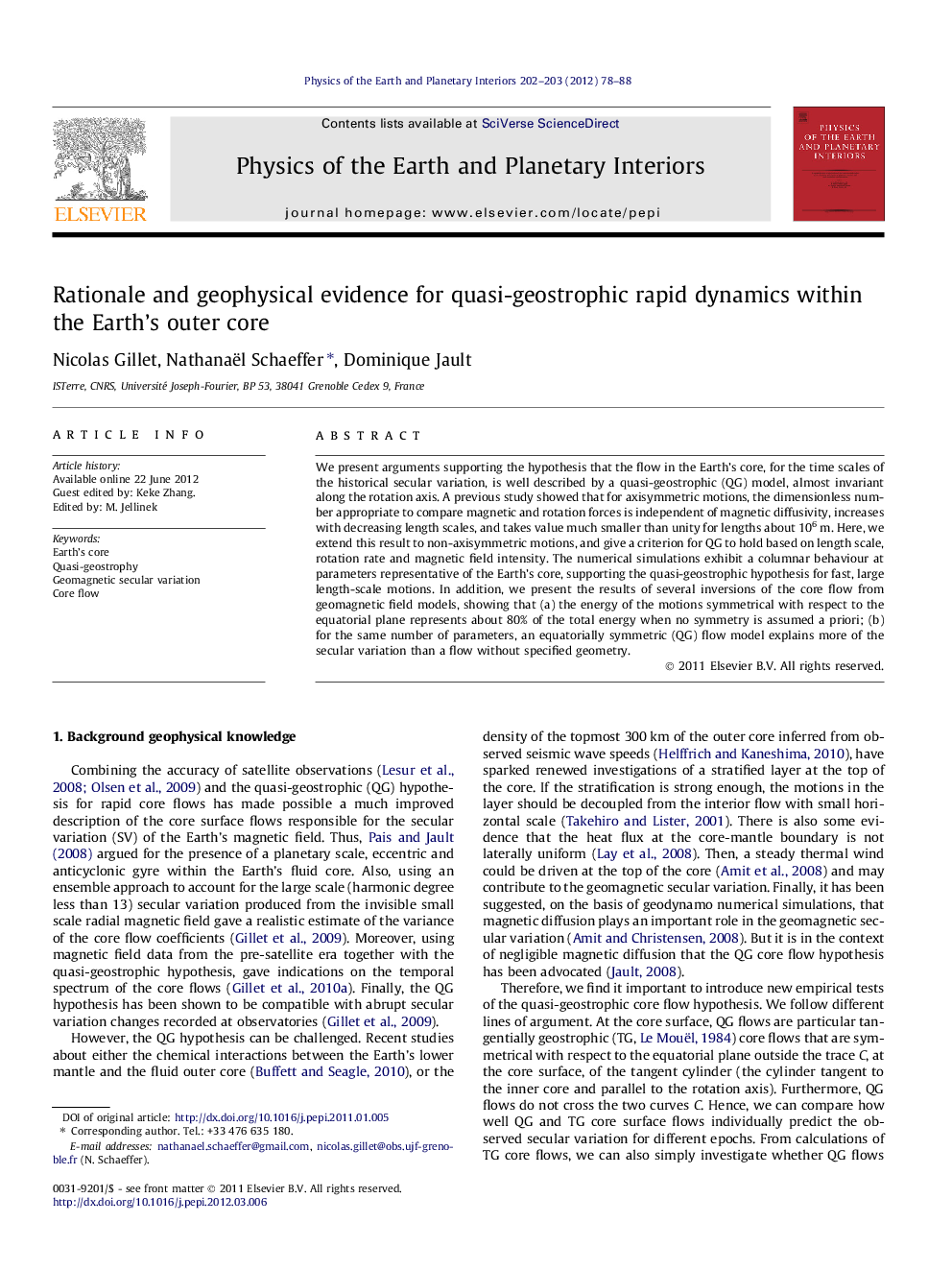| Article ID | Journal | Published Year | Pages | File Type |
|---|---|---|---|---|
| 4741772 | Physics of the Earth and Planetary Interiors | 2012 | 11 Pages |
We present arguments supporting the hypothesis that the flow in the Earth's core, for the time scales of the historical secular variation, is well described by a quasi-geostrophic (QG) model, almost invariant along the rotation axis. A previous study showed that for axisymmetric motions, the dimensionless number appropriate to compare magnetic and rotation forces is independent of magnetic diffusivity, increases with decreasing length scales, and takes value much smaller than unity for lengths about 106 m. Here, we extend this result to non-axisymmetric motions, and give a criterion for QG to hold based on length scale, rotation rate and magnetic field intensity. The numerical simulations exhibit a columnar behaviour at parameters representative of the Earth's core, supporting the quasi-geostrophic hypothesis for fast, large length-scale motions. In addition, we present the results of several inversions of the core flow from geomagnetic field models, showing that (a) the energy of the motions symmetrical with respect to the equatorial plane represents about 80% of the total energy when no symmetry is assumed a priori; (b) for the same number of parameters, an equatorially symmetric (QG) flow model explains more of the secular variation than a flow without specified geometry.
► We find strong evidence that large scale motions in the Earth's core are columnar. ► Quantitative criterion for the validity of the quasi-geostrophic hypothesis. ► The quasi-geostrophic hypothesis fails for short length-scales. ► Equatorially symmetric surface core flows make more than 80% of the total energy.
